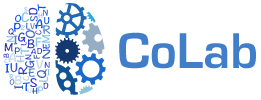
EDUARDO NAVARRETE
Via Venezia, 8 – Room 02.022
eduardo.navarrete@unipd.it
Research Areas
speech production; language and social categorization; lexical access; semantic access; sign language
Selected Publications
Sorry, no publications matched your criteria.
Publications
2017
Navarrete, E.; Peressotti, F.; Lerose, L.; Miozzo, M.
Activation cascading in sign production Journal Article
In: J Exp Psychol Learn Mem Cogn, vol. 43, no. 2, pp. 302–318, 2017.
@article{pmid27656874,
title = {Activation cascading in sign production},
author = {E. Navarrete and F. Peressotti and L. Lerose and M. Miozzo},
doi = {doi: 10.1037/xlm0000312},
year = {2017},
date = {2017-02-01},
journal = {J Exp Psychol Learn Mem Cogn},
volume = {43},
number = {2},
pages = {302--318},
abstract = {In this study, we investigated how activation unfolds in sign production by examining whether signs that are not produced have their representations activated by semantics (cascading of activation). Deaf signers were tested with a picture-picture interference task. Participants were presented with pairs of overlapping pictures and named the green picture (target) while ignoring the red picture (distractor). In Experiment 1 we varied whether target and distractor pictures had similar signs. Signs were produced faster with sign-related picture pairs compared to unrelated picture pairs. The facilitation observed with sign-related pairs replicates the 1 obtained in speaking with sound-related pairs (e.g., bed-bell), a finding cited in support of cascading of activation. In Experiments 2A and 2B we focused on sign iconicity, anticipating that cascading of activation would lead to a facilitatory effect of iconicity. Consistent with this prediction, picture distractors with iconic signs induced faster responses. Furthermore, in Experiment 3, facilitation was found for iconic signs in picture naming. Altogether, our results reveal that cascading of activation is a fundamental aspect of language processing that is at play not only in speaking, but also in signing. Our results also help to define which signs are activated in sign production.},
keywords = {},
pubstate = {published},
tppubtype = {article}
}
Basagni, B.; Luzzatti, C.; Navarrete, E.; Caputo, M.; Scrocco, G.; Damora, A.; Giunchi, L.; Gemignani, P.; Caiazzo, A.; Gambini, M. G.; Avesani, R.; Mancuso, M.; Trojano, L.; DeTanti, A.
VRT (verbal reasoning test): a new test for assessment of verbal reasoning. Test realization and Italian normative data from a multicentric study Journal Article
In: Neurol. Sci., 2017.
@article{pmid28097451,
title = {VRT (verbal reasoning test): a new test for assessment of verbal reasoning. Test realization and Italian normative data from a multicentric study},
author = {B. Basagni and C. Luzzatti and E. Navarrete and M. Caputo and G. Scrocco and A. Damora and L. Giunchi and P. Gemignani and A. Caiazzo and M. G. Gambini and R. Avesani and M. Mancuso and L. Trojano and A. DeTanti},
year = {2017},
date = {2017-01-01},
journal = {Neurol. Sci.},
keywords = {},
pubstate = {published},
tppubtype = {article}
}
Scaltritti, M.; Peressotti, F.; Navarrete, E.
A joint investigation of semantic facilitation and semantic interference in continuous naming Journal Article
In: J Exp Psychol Learn Mem Cogn, vol. 43, no. 5, pp. 818-823, 2017.
@article{pmid27929326,
title = {A joint investigation of semantic facilitation and semantic interference in continuous naming},
author = {M. Scaltritti and F. Peressotti and E. Navarrete},
doi = { http://dx.doi.org/10.1037/xlm0000354},
year = {2017},
date = {2017-01-01},
journal = {J Exp Psychol Learn Mem Cogn},
volume = {43},
number = {5},
pages = {818-823},
abstract = {When speakers name multiple semantically related items, opposing effects can be found. Semantic facilitation is found when naming 2 semantically related items in a row. In contrast, semantic interference is found when speakers name semantically related items separated by 1 or more intervening unrelated items. This latter form of interference is cumulative, as it increases as a function of the number of related items that have been named beforehand. Semantic facilitation has therefore been envisaged as a product of transient and fast-decaying activation of related representations, whereas semantic interference has been linked to longer-lasting changes in the connections between semantic and lexical representations. In this work we attempted to explore and compare the 2 phenomena jointly, by means of contrasting naming sequences with noncontiguous semantically related items and sequences with contiguous semantically related items. Results provide evidence that mechanisms responsible for semantic facilitation and interference may jointly occur in parallel, producing opposing influences on behavior. Importantly, semantic facilitation may exhibit cumulative features too, though these are immediately disrupted when unrelated items intervene.},
keywords = {},
pubstate = {published},
tppubtype = {article}
}
Colombo, Lucia; Navarrete, Eduardo; Arf'e, Barbara
Acquisition of nouns and verbs in Italian pre-school children Journal Article
In: Journal of child language, vol. 44, no. 6, pp. 1362, 2017.
@article{colombo2017acquisition,
title = {Acquisition of nouns and verbs in Italian pre-school children},
author = { Lucia Colombo and Eduardo Navarrete and Barbara Arf{'e}},
year = {2017},
date = {2017-01-01},
journal = {Journal of child language},
volume = {44},
number = {6},
pages = {1362},
publisher = {Cambridge University Press},
keywords = {},
pubstate = {published},
tppubtype = {article}
}
2016
Egusquiza, N.; Navarrete, E.; Zawiszewski, A.
Antecedent frequency effects on anaphoric pronoun resolution: Evidence from Spanish Journal Article
In: J Psycholinguist Res, vol. 45, no. 1, pp. 71–84, 2016.
@article{pmid25300350,
title = {Antecedent frequency effects on anaphoric pronoun resolution: Evidence from Spanish},
author = {N. Egusquiza and E. Navarrete and A. Zawiszewski},
year = {2016},
date = {2016-02-01},
journal = {J Psycholinguist Res},
volume = {45},
number = {1},
pages = {71--84},
keywords = {},
pubstate = {published},
tppubtype = {article}
}
Mahon, B Z; Navarrete, E
Modelling lexical access in speech production as a ballistic process Journal Article
In: Language, Cognition and Neuroscience, vol. 31, no. 4, pp. 521–523, 2016.
@article{mahon2016modelling,
title = {Modelling lexical access in speech production as a ballistic process},
author = {B Z Mahon and E Navarrete},
year = {2016},
date = {2016-01-01},
journal = {Language, Cognition and Neuroscience},
volume = {31},
number = {4},
pages = {521--523},
publisher = {Taylor & Francis},
keywords = {},
pubstate = {published},
tppubtype = {article}
}
Navarrete, Eduardo; Mahon, Bradford Z; Lorenzoni, Anna; Peressotti, Francesca
What can written-words tell us about lexical retrieval in speech production? Journal Article
In: Frontiers in Psychology, vol. 6, pp. 1982, 2016.
@article{navarrete2016canc,
title = {What can written-words tell us about lexical retrieval in speech production?},
author = { Eduardo Navarrete and Bradford Z Mahon and Anna Lorenzoni and Francesca Peressotti},
url = {https://www.frontiersin.org/articles/10.3389/fpsyg.2015.01982/full},
doi = {https://doi.org/10.3389/fpsyg.2015.01982},
year = {2016},
date = {2016-01-01},
urldate = {2016-01-01},
journal = {Frontiers in Psychology},
volume = {6},
pages = {1982},
publisher = {Frontiers},
abstract = {In recent decades, researchers have exploited semantic context effects in picture naming tasks in order to investigate the mechanisms involved in the retrieval of words from the mental lexicon. In the blocked naming paradigm, participants name target pictures that are either blocked or not blocked by semantic category. In the continuous naming task, participants name a sequence of target pictures that are drawn from multiple semantic categories. Semantic context effects in both tasks are a highly reliable phenomenon. The empirical evidence is, however, sparse and inconsistent when the target stimuli are printed-words instead of pictures. In the first part of the present study we review the empirical evidence regarding semantic context effects with written-word stimuli in the blocked and continuous naming tasks. In the second part, we empirically test whether semantic context effects are transferred from picture naming trials to word reading trials, and from word reading trials to picture naming trials. The results indicate a transfer of semantic context effects from picture naming to subsequently read within-category words. There is no transfer of semantic effects from target words that were read to subsequently named within-category pictures. These results replicate previous findings (Navarrete et al., 2010) and are contrary to predictions from a recent theoretical analysis by Belke (2013). The empirical evidence reported in the literature together with the present results, are discussed in relation to current accounts of semantic context effects in speech production.},
keywords = {},
pubstate = {published},
tppubtype = {article}
}
2015
Navarrete, E.; Pastore, M.; Valentini, R.; Peressotti, F.
First learned words are not forgotten: Age-of-acquisition effects in the tip-of-the-tongue experience Journal Article
In: Mem Cognit, vol. 43, no. 7, pp. 1085–1103, 2015.
@article{pmid25956729,
title = {First learned words are not forgotten: Age-of-acquisition effects in the tip-of-the-tongue experience},
author = {E. Navarrete and M. Pastore and R. Valentini and F. Peressotti},
year = {2015},
date = {2015-10-01},
journal = {Mem Cognit},
volume = {43},
number = {7},
pages = {1085--1103},
keywords = {},
pubstate = {published},
tppubtype = {article}
}
Ries, S. K.; Karzmark, C. R.; Navarrete, E.; Knight, R. T.; Dronkers, N. F.
Specifying the role of the left prefrontal cortex in word selection Journal Article
In: Brain Lang, vol. 149, pp. 135–147, 2015.
@article{pmid26291289,
title = {Specifying the role of the left prefrontal cortex in word selection},
author = {S. K. Ries and C. R. Karzmark and E. Navarrete and R. T. Knight and N. F. Dronkers},
year = {2015},
date = {2015-10-01},
journal = {Brain Lang},
volume = {149},
pages = {135--147},
keywords = {},
pubstate = {published},
tppubtype = {article}
}
Basagni, B.; Navarrete, E.; Bertoni, D.; Cattran, C.; Mapelli, D.; Oddy, M.; DeTanti, A.
The Italian version of the Brain Injury Rehabilitation Trust (BIRT) personality questionnaires: five new measures of personality change after acquired brain injury Journal Article
In: Neurol. Sci., vol. 36, no. 10, pp. 1793–1798, 2015.
@article{pmid25981230,
title = {The Italian version of the Brain Injury Rehabilitation Trust (BIRT) personality questionnaires: five new measures of personality change after acquired brain injury},
author = {B. Basagni and E. Navarrete and D. Bertoni and C. Cattran and D. Mapelli and M. Oddy and A. DeTanti},
year = {2015},
date = {2015-10-01},
journal = {Neurol. Sci.},
volume = {36},
number = {10},
pages = {1793--1798},
keywords = {},
pubstate = {published},
tppubtype = {article}
}
Electronic versions of papers are provided as a professional courtesy to ensure timely dissemination of academic work for individual, noncommercial purposes. Copyright and all rights therein reside with the respective copyright holders, as stated in each paper. These files may not be reposted without permission.
